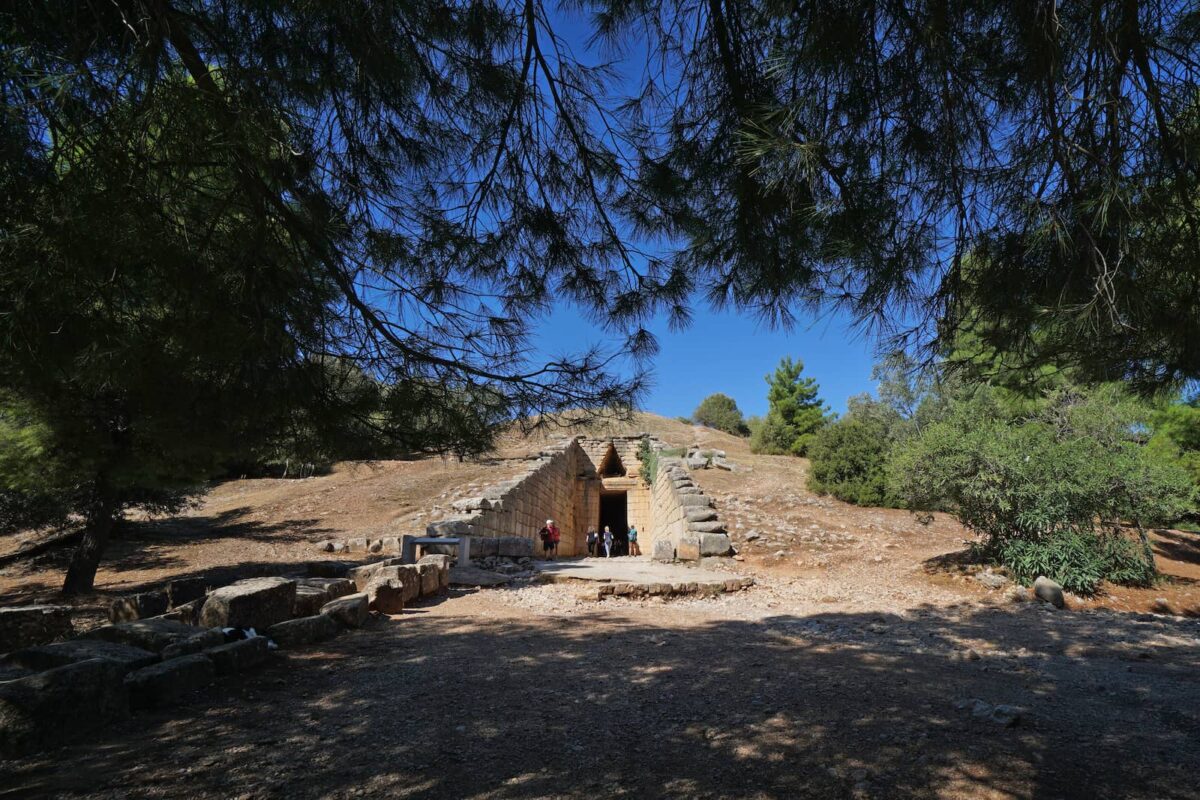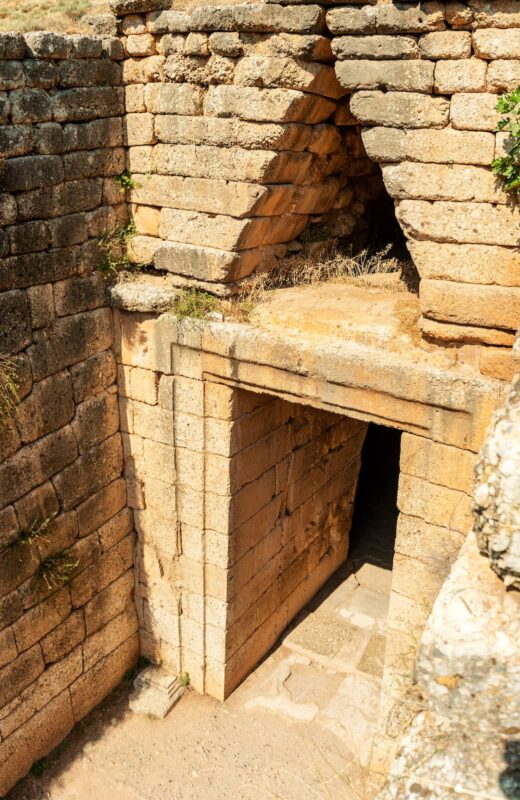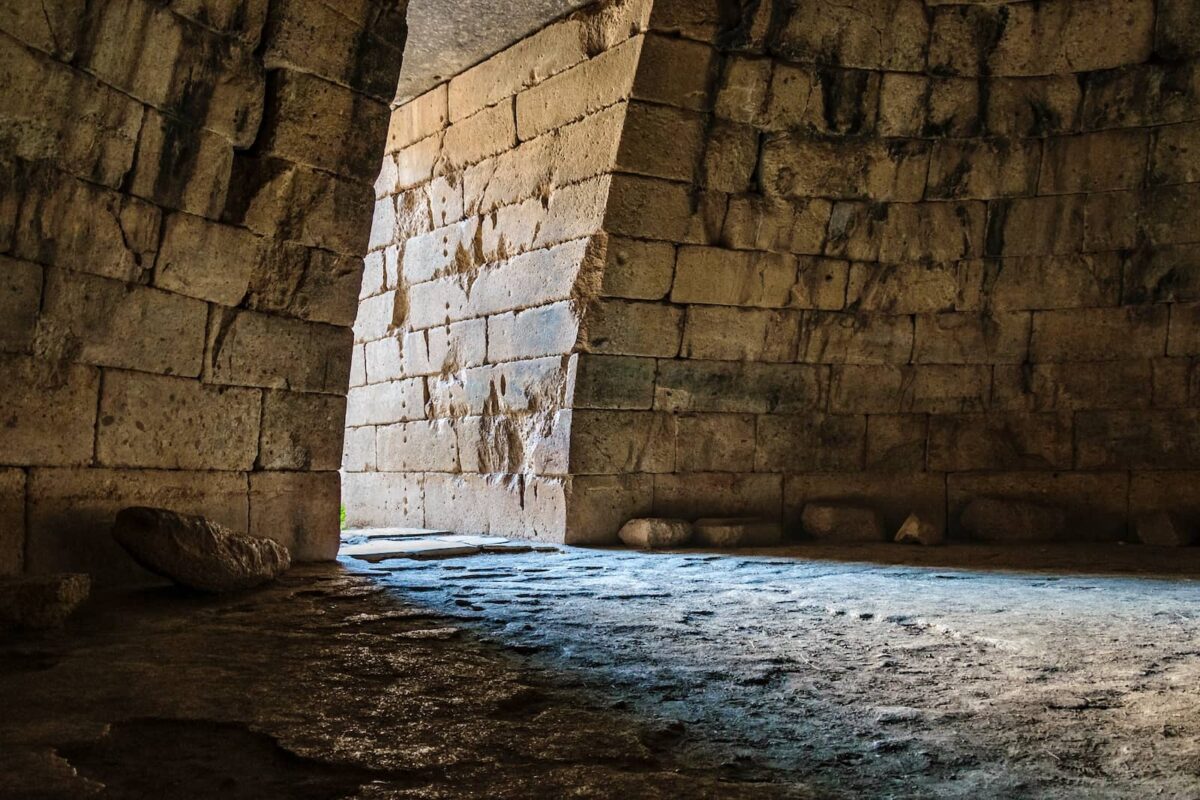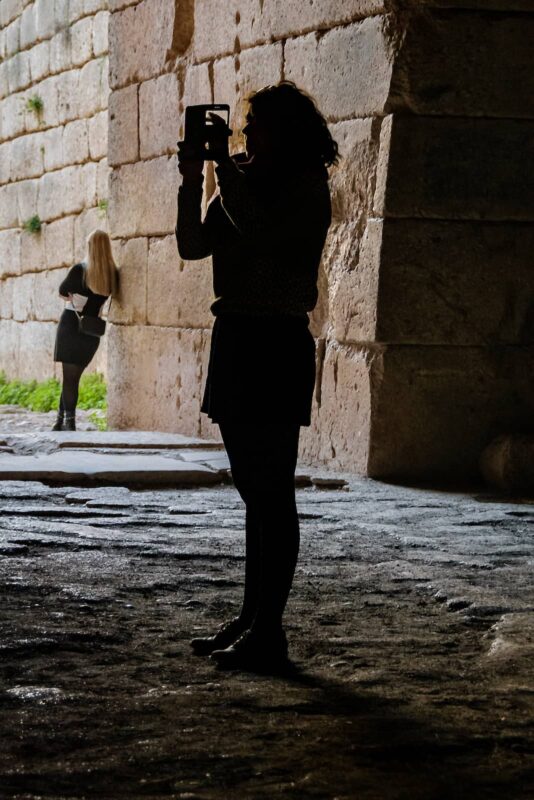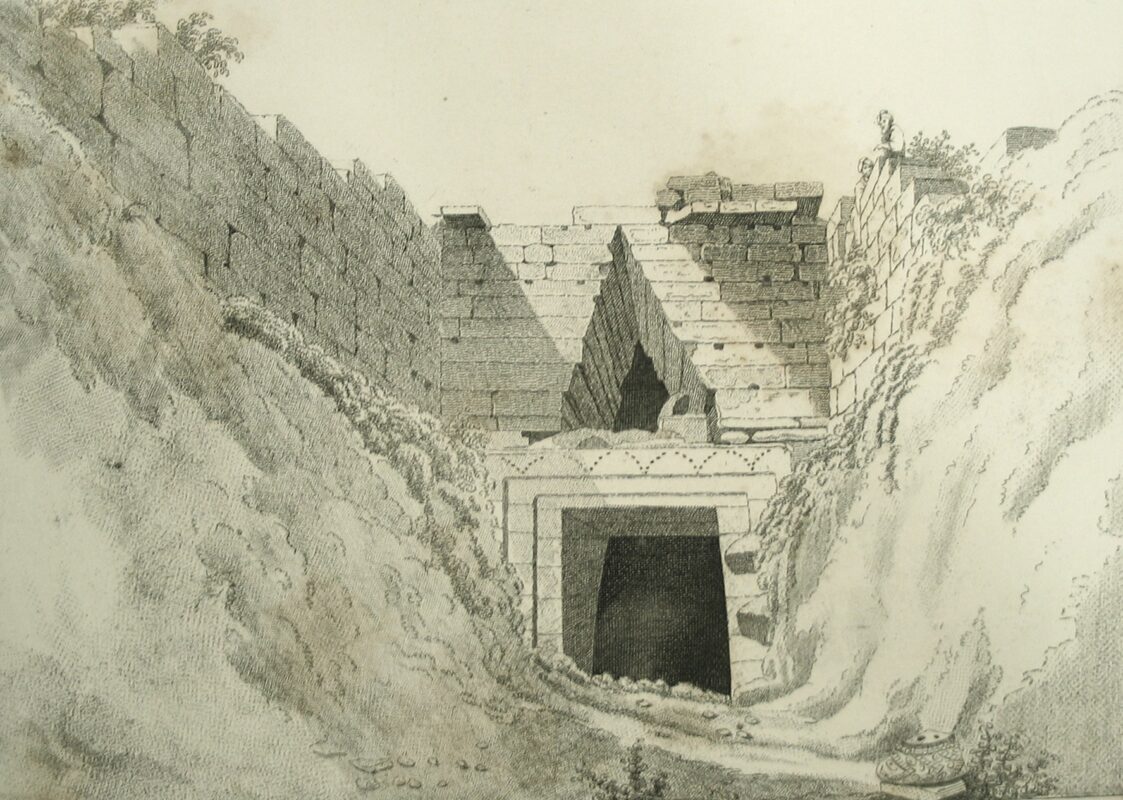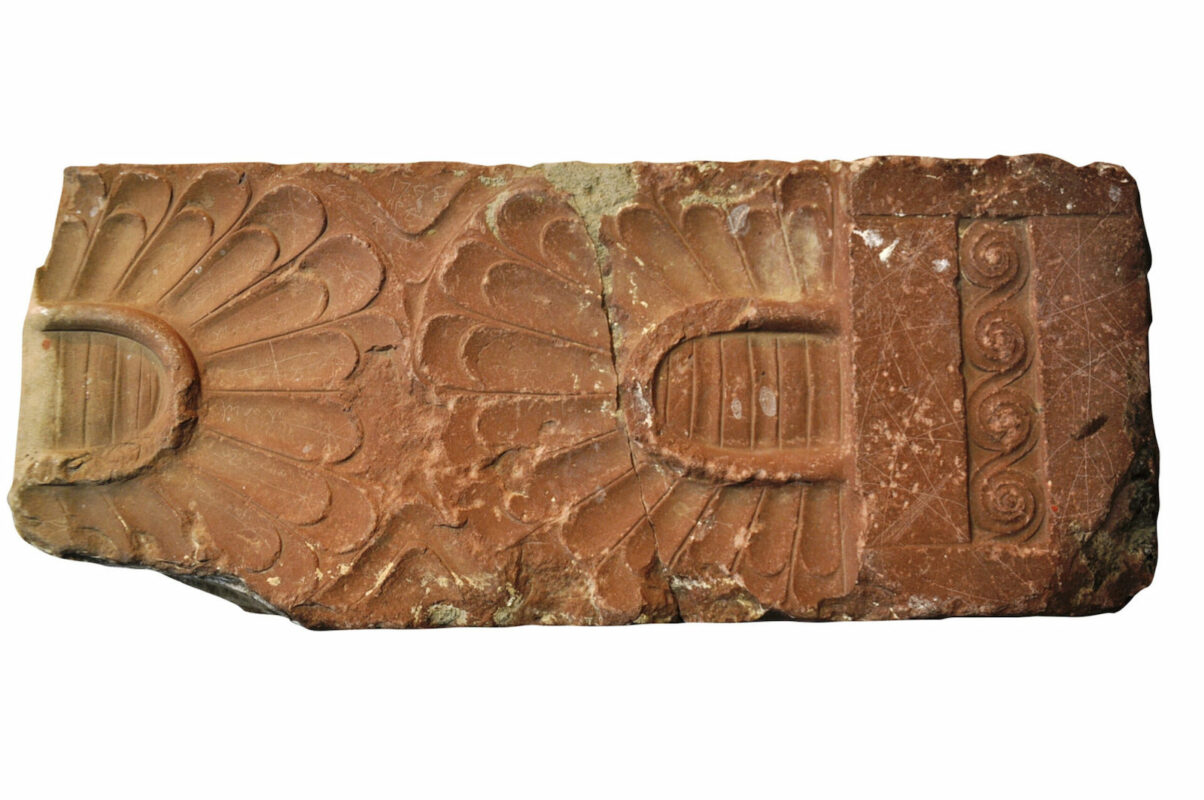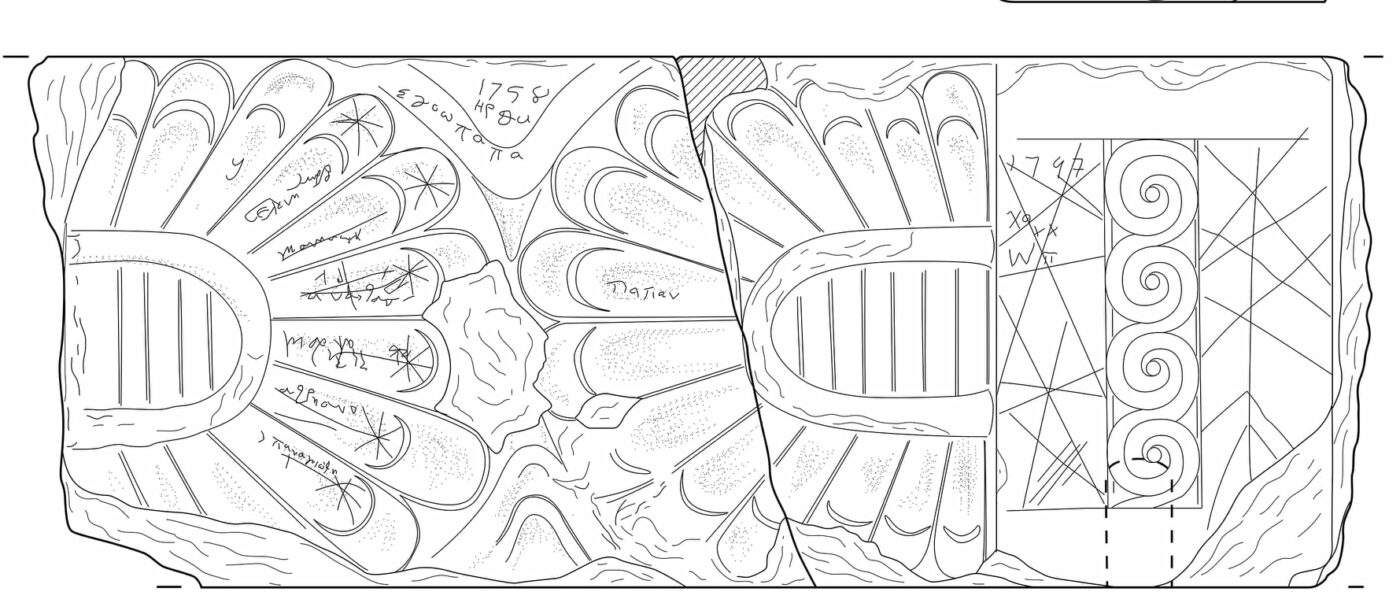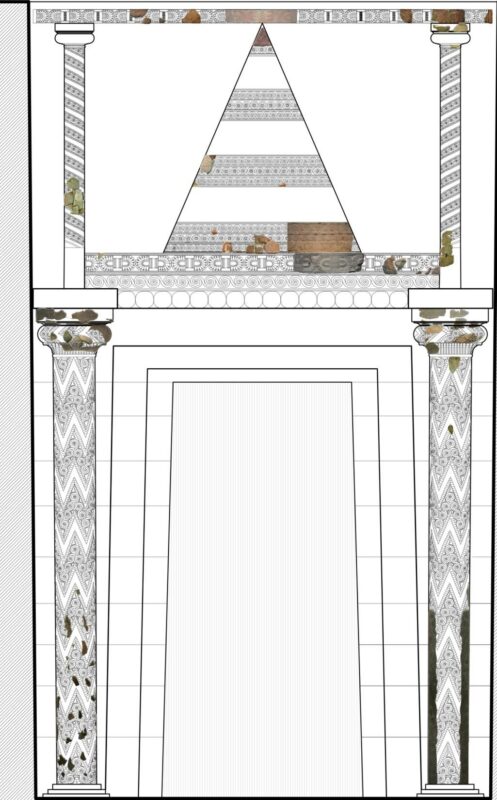About the tomb
The Treasury of Atreus -formerly known as the Tomb of Agamemnon- is the most monumental construction of the Mycenean period and is preserved in excellent condition. It is considered one of the largest and most remarkable tholos tombs, and the most impressive one of the nine tombs in Mycenae. It is located in the southwest of the Mycenean Acropolis and on the trail, which used to connect Mycenae with the Heraion of the city of Argos.
It dates between 1350-1250 BC. and is considered one of the brightest and most extraordinary examples of Mycenaean architecture at its peak, alongside its contemporary Lion Gate. It was used for the burial of a significant member of the royal family of Mycenae. Since the days of Pausanias’ travels (2nd century AD) among the inhabitants of that region, this monument was known as the Treasury of Atreus or, in other words, the treasury of the founder of the mythical Mycenaean Acropolis.
After the end of the Mycenean period, the monument ceased to be used as a tomb. When Pausanias visited it in the 2nd century AD, the tomb had already been looted and was partially crushed with soil. During the following centuries, some shepherds used it as a shelter and removed the “key”, so that the smoke from their fires, which resulted in traces on the sides of the dome, could escape.
What to expect when visiting the Treasury of Atreus
Although the word “treasury” often refers to a place where valuable are stored, the Treasury of Atreus was actually designed as a burial site, and it required extensive work to build. It is still highly likely, however, that once in the past there were also treasures stored at this site.
The tomb, which is open to visitors throughout the year, is considered the be the biggest in size and the most intricate of the various tholos structures that were built during the Aegean civilization’s Bronze Age. Excavations at the site first happened in the 1800s when initial parts of its outer structure were uncovered, and then more extensive excavations to uncover the structure happened in later years, particularly in the 1870s and also during the 20th century.
When you arrive at the tomb you will see a long road, known as a dolos, leading up to the entrance of the tholos, which has been carved into the earth of the surrounding hill. The amount of effort that would have been required to make the tomb stable when being effectively built into the hill is one of the reasons why the structure continues to inspire awe from its visitors.
The central chamber of the tomb is built in a circular design, and you will find a small chamber located to the side of this room. The walls are constructed from stone building blocks that start to get smaller as you look further up the structure, which helps to create the corbelled appearance that results in the dome on top of the building that led to the nickname of being a beehive tomb. The ceiling of this central chamber exceeds 13 meters and is the largest of the rooms.
You’ll also be able to see the entrance to the side chamber of the tholos, although this is often roped off to preserve the structure, so you will only be allowed to look inside it but not enter. Many years ago, this side chamber would have been the graves and place where treasures were kept.
For present day visitors, you will see a wide open entryway to the burial chamber, but it would not always have looked like this. Experts believe that the tomb when originally constructed would have had a solid door to seal off the inside of the structure to prevent people getting inside.
This original doorway was also believed to have columns on either side that were decorated in a green shade of marble, with designs that were made using zigzag and spiral patterns.
Above the entranceway you will see a large lintel, or beam, made of stone that is thought to weigh up to 120 tons, with a triangle design immediately above it. This triangle once was decorated with green and red shades of marble and helped to keep the soil from the hills entering the tomb.
The Treasury of Atreus’ connection to mythology
Although the landmark is called the Treasury of Atreus, its association with the mythological King Atreus of Mycenae was said to be established sometime in the 1700s.
Atreus was known as the father of the Greek King Agamemnon who led the country’s troops throughout the Trojan War, and also of Menelaus, a king of Sparta.
It’s widely accepted that surveyors and others who explored the site in the 18th century drew the connection between historic texts that mentioned a tomb where Atreus and his treasures were buried, and with the site that is now known as the Treasury of Atreus. But there are no definitive sources of evidence that directly connect the tomb with the legend of Atreus.
One of the pieces of information that did lead some people to make the link between the tomb and the potential for it being Atreus’ final resting place is a description that was written by Pausanias, who was effectively a travel writer in the second century AD, which said Atreus’ grave, and the grave of his relatives, and the treasures they possessed, was close to Mycenae.
But scholars also note that there is no direct proof that the site once held the remains and the treasures of Atreus or any of his fabled family members, and none is likely to be found.
Nevertheless, the name for this famous site has persisted since the 1700s and is now the common way that it is described. Because of likely looting over the centuries, there is unfortunately little information available about the exact identities of the historic figures that might have been laid to rest at the tomb, or about the treasures they were buried with.
But what historians do generally accept is that the tomb was built during the Aegean Bronze Age, and that even after many years of being looted, there is still plenty to appreciate about the elaborate construction of this impressive structure and its vital role in Greek history.
In particular, the sheer scale of the tomb and the amount of work that would have been required to construct it has led most experts to conclude that the tholos was certainly the burial site of some highly regarded figure from the Aegean Bronze Age. This could have been an elite member of a society, such as a royal leader, or someone that was very close to them.
Getting to and from the Treasury of Atreus
Depending on where you are staying in Argos or nearby, you have a few options for deciding how you would like to make the journey between your hotel and the Treasury of Atreus.
Choosing the right option will depend on how much money you want to spend and whether you’re willing to share your ride with strangers, or would like the privacy of riding by yourself. There are options available to fit every budget, ranging from cheap to more expensive.
You could take a public bus between the two locations, which should only cost a few Euros and take about 15 minutes to 20 minutes, depending on how much traffic is on the road. You can expect the travel time to be longer if you are attempting to get to the site during peak traffic times like rush hour, but the bus ride may be shorter if you’re traveling when it’s quieter.
More expensive options include taking a taxi, which will be charged based on distance between your accommodation and the historic site. Remember also that it is considered courteous to tip your driver with a few Euros if you believe that you received a safe, quick and pleasant ride. This will be more expensive than taking the bus, but the drive time should be about the same.
Or you could consider hiring your own car to make a day trip to the Treasury of Atreus, but this is typically the most expensive of the three options, and the final price will depend on which type of car you rent and how long you decide to hire it. But this does offer the maximum flexibility for your travel plans because you can travel to and from the site at your own leisure. Just remember that you will also likely to have buy travel insurance, and you’ll also be required to pay for refilling the car’s gas tank in the event that you empty it during your rental.

